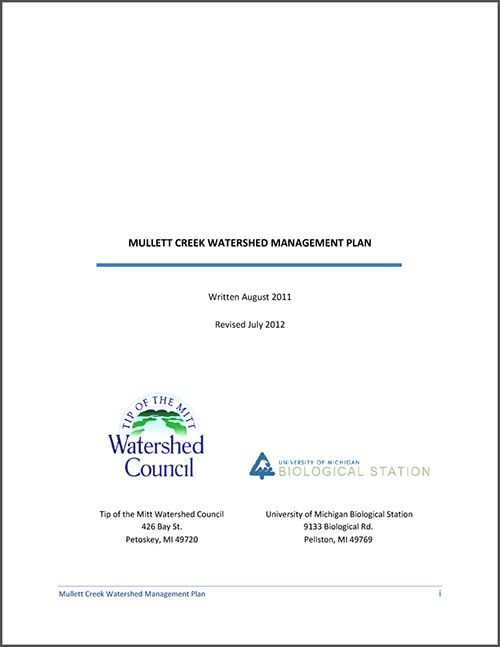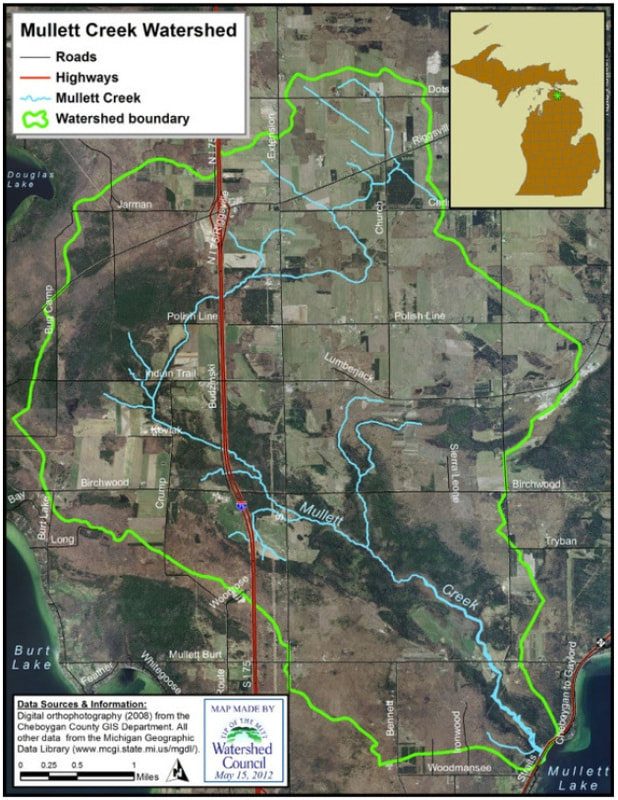Mullett Creek Watershed Management Plan
|
The Mullett Creek Watershed Management Plan provides a watershed based management approach for improving water quality and preserving the ecological integrity of Mullett Creek, which is located in Cheboygan County in the Northern Lower Peninsula of Michigan. Water quality concerns in the watershed include nutrient pollution, excessive sedimentation, high bacteria concentrations, and elevated water temperatures. The stream ecosystem is also under threat from aquatic invasive species and habitat loss. Stressors affecting the Mullett Creek ecosystem include: agricultural operations, residential land use, road-stream crossings, and beaver dams.
Mullett Creek is the third largest tributary of Mullett Lake with a main channel length of approximately 11 miles. Fed by multiple groundwater streams in its headwaters east of 75 and west of Douglas Lake, Mullett Creek flows southeast and empties into the midwest side of Mullett Lake, which is Michigan’s fifth largest inland lake. The watershed of Mullett Creek encompasses 11,874 acres. Brook trout fishing is the primary recreational activity associated with the creek. |
|
A watershed management approach to protecting the stream and addressing problems is not only important for the health of Mullett Creek, but for the receiving waters of Mullett Lake as well. During an assessment of Mullett Lake tributaries, Mullett Creek was found to contribute disproportionately high levels of nutrients, such as phosphorus (TOMWC 2008). The excessive nutrient inputs, also called “nutrient pollution”, are likely derived from many sources, though agricultural land use has been implicated as the primary source. Nutrient pollution can stimulate nuisance aquatic plant and algae growth, increase water turbidity, result in potentially harmful algal blooms, and lead to dissolved oxygen deficits which negatively impact the fishery.
The Mullett Creek Watershed Management Plan consists of the following: 1) a project overview with goals and objectives, 2) general watershed information, 3) water quality monitoring, 4) inventories and surveys, 5) watershed issues and concerns, and 6) watershed management recommendations for addressing problems. Successful implementation of the Plan’s recommendations will result in improved water quality conditions in Mullett Creek, as well as restoration and maintenance of the stream ecosystem. |





